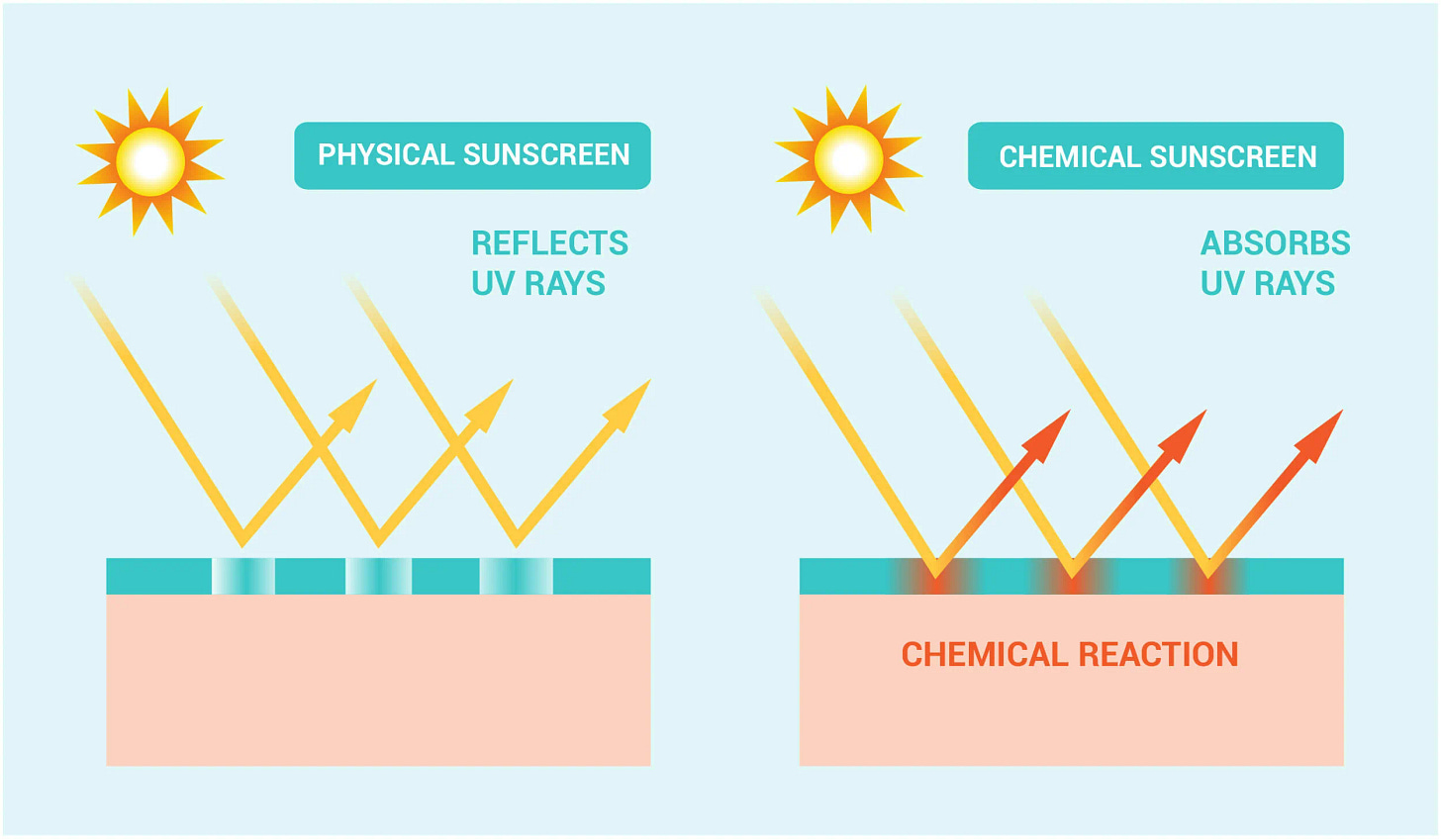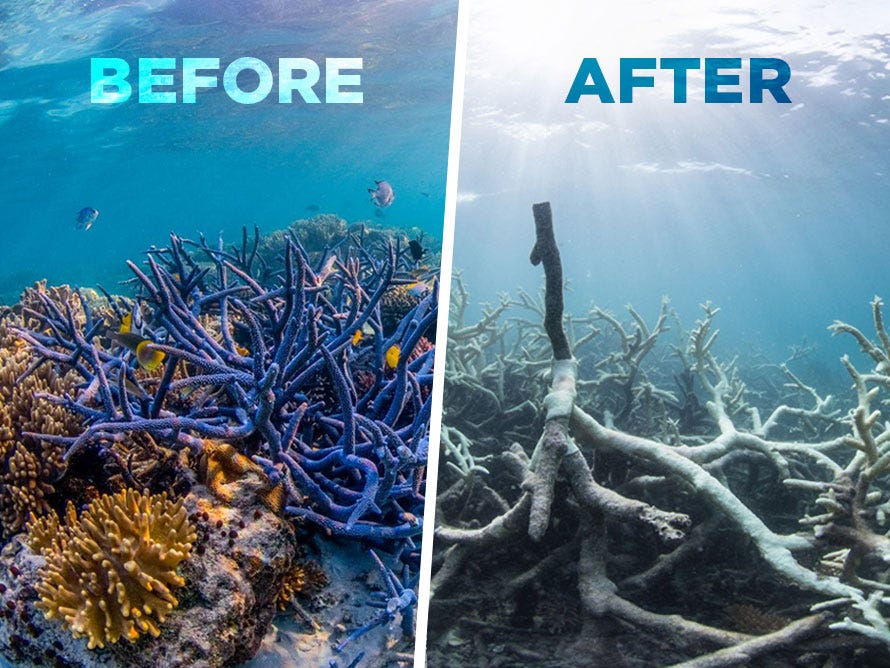What’s in Your Sunscreen? Health, Hormones, and Hazards in the SPF Debate
Chemical vs. mineral. Reef-safe vs. hormone-disrupting. As bans mount and studies pile up, here’s what to know and what to ask before you slather on.
In 2025, the sunscreen aisle is looking different. New state-level bans, fresh lab tests, and growing scrutiny over chemical ingredients are reshaping what consumers can buy, and what they should trust. At the same time, public health officials still emphasize sunscreen as a critical tool in preventing skin cancer.
But many Americans don’t know: Do you apply it correctly? Do your kids? And is your SPF harming more than it helps?
Understanding Sunscreen: Absorbers vs. Reflectors
Chemical sunscreens work by absorbing UV rays and converting them to heat. Common ingredients include avobenzone, oxybenzone, and octinoxate. These filters offer clear, lightweight coverage but are absorbed into the skin, and in some cases, the bloodstream.
Mineral sunscreens use zinc oxide or titanium dioxide. They sit on top of the skin, reflecting and scattering UV rays. Zinc oxide in particular blocks both UVA and UVB rays effectively, making it ideal for sensitive skin. But these formulas often leave a white cast and can feel heavier.
Notably, zinc oxide also absorbs some UV radiation, blurring the old dichotomy between "chemical" and "physical" sunscreens.
Safety and Environmental Concerns
Chemical sunscreens have come under fire for several reasons:
Systemic absorption: Studies have found ingredients like oxybenzone in blood and breast milk.
Endocrine disruption: Some filters mimic hormones and may interfere with thyroid and reproductive systems.
Photostability: Ingredients like avobenzone degrade in sunlight unless stabilized.
Environmental damage: Oxybenzone and octinoxate are linked to coral bleaching, even at low concentrations.
That’s why regions like Hawaii, Palau, and parts of Mexico have banned certain chemical sunscreens.
Mineral sunscreens, particularly those labeled non-nano, are generally considered reef-safe and are recommended for children and pregnant women.
Sunscreen Meets Chlorine: An Overlooked Reaction
The risks of chemical sunscreens don’t stop at the shoreline. Even your swimming pool might be reacting with your sunscreen.
Newer studies suggest that chemical sunscreens can break down in chlorinated water, such as pools, creating potentially harmful byproducts. For instance, avobenzone may degrade into compounds with unknown long-term health impacts. Consumers swimming in chlorinated pools should take note.
The EWG Sunscreen Guide: Trusted but Contested
The Environmental Working Group (EWG) reviewed more than 2,200 SPF products in 2025. Only 23% met their safety and efficacy criteria. EWG favors mineral sunscreens and flags products with oxybenzone, octocrylene, and undisclosed fragrances.
EWG also warns about misleading SPF claims boosted by chemical enhancers, and strongly advises against sprays due to inhalation risks.
Critics argue EWG's methods can be overly conservative, but dermatologists agree on key points: choose broad-spectrum SPF 30+, reapply every 2 hours, and avoid known irritants if you have sensitive skin.
Global Regulation: Who Says What's Safe?
The FDA currently lists only zinc oxide and titanium dioxide as Generally Recognized as Safe and Effective (GRASE). All other filters await more safety data.
The EU, by contrast, permits over two dozen UV filters, thanks to its more proactive and precautionary approach. Advanced filters like Bemotrizinol offer superior protection but remain unavailable in the U.S.
Australia's TGA, known for its rigorous Therapeutic Goods (Sunscreen) Determination standards, recommends restrictions on oxybenzone and homosalate due to potential endocrine effects but hasn’t issued outright bans on all chemical sunscreens, focusing instead on strict concentration limits and continuous review. The U.S. market remains caught between slow FDA reviews and growing consumer pressure.
Application Matters More Than You Think
Most people apply only 25-50% of the amount needed for full protection. Dermatologists recommend:
One ounce (a shot glass) for full-body coverage
Reapplication every 2 hours, or after swimming/sweating
Starting 15 minutes before sun exposure (for chemical sunscreens)
And the stakes are real. Research shows that five or more blistering sunburns between ages 15 and 20 can increase the risk of melanoma by 80% and non-melanoma skin cancers by 68% later in life.
Not All Sun Is Bad
Moderate, non-burning sun exposure can have clear health benefits. Just 10 to 20 minutes of unprotected sunlight on the arms and legs helps the body produce Vitamin D, supports sleep-wake cycles, and may even boost mood. The key is avoiding overexposure — especially during peak UV hours.
“Reef-Safe” Isn’t a Buzzword; It’s a Biocide Warning
Tourism-heavy beaches like Hanauma Bay in Hawaii test sunscreen chemicals at levels that exceed toxic thresholds for coral by 12-fold. Ingredients like oxybenzone have been shown to damage coral DNA, disrupt fish reproduction, and bioaccumulate in marine mammals. And it’s not just oceans — freshwater runoff and wastewater can carry these chemicals far inland.
Switching to non-nano zinc oxide sunscreens — many of which are top-rated by the EWG — protects both you and aquatic ecosystems.
Smart Sun Safety
Choosing the right sunscreen isn’t just about SPF. It’s about what your skin absorbs, how your sunscreen behaves in water, and what ends up in your bloodstream or the sea. Mineral sunscreens are rising for good reason. But correct use still trumps perfect ingredients.
Where to Buy (Affiliate Links) Top EWG Certified Sunscreens
Mustela Baby Mineral Sunscreen Stick SPF 50 Broad Spectrum
These links help support The Health Signal’s independent reporting. I use Thinksport Mineral Sunscreen, SPF 50, when I have a lot of UV exposure.






ThinkSport is my preferred choice and happy to read that it also protects coral reefs and fish. Thank you for the informative article!